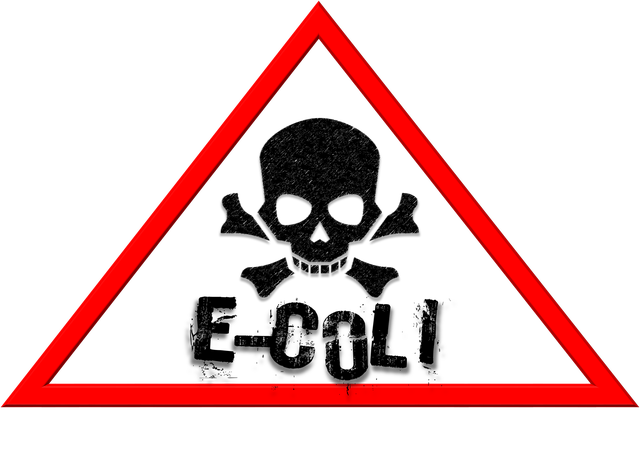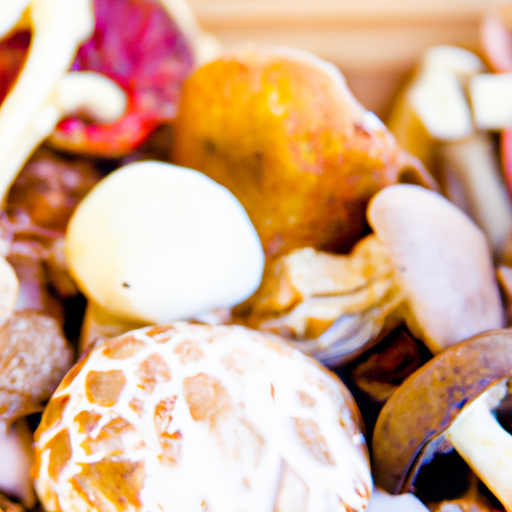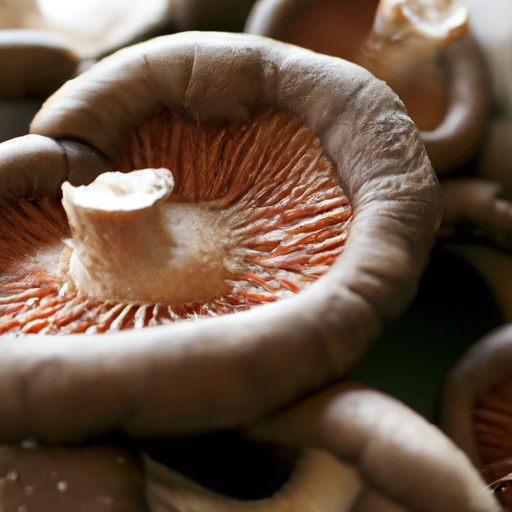In this article, you will learn everything you need to know about safely eating raw mushrooms. We will provide you with practical advice on preparing, cooking, and storing mushrooms. Whether you’re a cooking enthusiast or just looking to incorporate more mushrooms into your diet, this ultimate guide has got you covered. From cooking methods to storing techniques, we’ve got all the tips and information you need to ensure a safe and delicious mushroom experience.
When it comes to eating raw mushrooms, it’s important to understand the potential risks and how to mitigate them. We will delve into the safety aspects of eating raw mushrooms, providing you with valuable insights on the best practices. With our guidance, you can confidently enjoy the unique texture and flavor of raw mushrooms while ensuring your health and well-being. So get ready to embark on a culinary journey with mushrooms and explore the various ways to prepare, cook, and store them safely. can be a unique and enjoyable way to incorporate this nutritious ingredient into your diet. While mushrooms are often cooked to enhance their flavors, eating them raw can provide a different taste and texture experience. However, it is important to ensure that you are doing so safely, as some varieties of mushrooms can be toxic when not properly prepared. In this ultimate guide, we will explore everything you need to know about safely eating raw mushrooms.

Why Should You Eat Raw Mushrooms?
Raw mushrooms retain their natural flavors and textures, providing a fresh and earthy taste that can be quite delightful. They are also rich in essential nutrients such as vitamins, minerals, and antioxidants, which can provide numerous health benefits. By eating mushrooms in their raw state, you can enjoy these nutrients in their purest form, maximizing their potential benefits for your overall well-being.
Types of Raw Mushrooms to Consider
Not all mushrooms are suitable for raw consumption. It is important to choose varieties that are safe and palatable when eaten raw. Here are some common types of mushrooms that are commonly enjoyed raw:
-
White Button Mushrooms: These mushrooms have a mild flavor and firm texture, making them ideal for raw consumption. They are also widely available and versatile for various recipes.
-
Crimini Mushrooms: Also known as baby bella mushrooms, crimini mushrooms have a slightly earthier flavor compared to white button mushrooms. They can add depth to raw dishes such as salads or crudité platters.
-
Portobello Mushrooms: While portobello mushrooms are often cooked, they can also be enjoyed raw when sliced thinly. Their meaty texture and robust flavor make them perfect for raw mushroom dishes.
-
Shiitake Mushrooms: Shiitake mushrooms have a unique smoky flavor and a chewy texture. They can be enjoyed raw when sliced thinly and added to salads or used as a topping for sandwiches.
-
Oyster Mushrooms: These delicate mushrooms have a mild and slightly sweet taste. They can be eaten raw in salads or used in raw vegan recipes due to their tender texture.
When choosing mushrooms for raw consumption, always opt for organic and fresh varieties. This ensures that you are getting the best quality mushrooms while minimizing the risk of consuming pesticides or other harmful substances.

Selecting and Inspecting Fresh Raw Mushrooms
To ensure that your raw mushrooms are fresh and safe to eat, it is crucial to select and inspect them properly. Here are some tips to consider when choosing fresh raw mushrooms:
-
Look for firm and plump mushrooms: Avoid mushrooms that appear slimy, bruised, or wrinkled. Fresh mushrooms should have a firm texture and a slight shine to their surface.
-
Check the gills: For mushrooms with gills, such as portobellos or shiitakes, inspect the gills to ensure they are not discolored or covered in mold. These are signs of spoilage and should be avoided.
-
Examine the stem: The stem of the mushroom should be sturdy and not overly mushy. Mushrooms with soft and spongy stems are likely past their prime and may not be safe to eat raw.
-
Smell the mushrooms: Fresh mushrooms should have a mild, earthy odor. If they smell foul or have a pungent aroma, it is best to discard them.
By carefully inspecting your raw mushrooms before consumption, you can ensure that you are selecting the freshest and safest options for your dishes.
Properly Cleaning Raw Mushrooms
Cleaning raw mushrooms is essential to remove any dirt or debris that may be present. Here’s a simple step-by-step guide on how to clean raw mushrooms:
-
Gently wipe the mushrooms: Begin by wiping the mushroom caps and stems with a clean, damp cloth or paper towel. This will remove any loose dirt or debris.
-
Trim the stems (optional): If desired, trim the mushroom stems slightly to remove any tough or woody portions. This step is not necessary for all mushrooms and can be omitted if the stems are tender.
-
Rinse quickly (optional): Some people prefer to rinse their mushrooms quickly under cold running water. However, this step is optional, as mushrooms are like sponges and can absorb excess water, potentially affecting their texture and taste.
-
Pat dry: After cleaning, gently pat the mushrooms dry with a clean towel or paper towel. This helps to remove any remaining moisture, ensuring that the mushrooms remain fresh.
Properly cleaning raw mushrooms not only removes any dirt or impurities but also helps to enhance their natural flavors when eaten raw.

Potential Risks and Dangers of Eating Raw Mushrooms
While many varieties of mushrooms are safe to eat raw, there are some exceptions to be aware of. Certain wild mushrooms can be toxic and should never be consumed raw. These toxic mushrooms may contain harmful compounds that can cause nausea, vomiting, stomach cramps, or even more severe symptoms.
To ensure your safety when eating raw mushrooms, it is crucial to only consume varieties that are known to be safe and palatable in their raw state. Stick to the common mushroom types mentioned earlier, as they are generally recognized as safe for raw consumption.
If you are unsure about the safety of a particular mushroom species, it is best to err on the side of caution and avoid eating it raw. Instead, cook these mushrooms thoroughly to ensure that any potential toxins are neutralized.
Safe Ways to Eat Raw Mushrooms
Once you have selected, inspected, and cleaned your raw mushrooms, you can enjoy them in various ways. Here are some safe and delicious ways to incorporate raw mushrooms into your diet:
-
Raw Mushroom Salad: Slice the mushrooms thinly and toss them with a mix of fresh greens, cherry tomatoes, cucumbers, and your favorite dressing. This simple salad allows the earthy flavor of the mushrooms to shine.
-
Mushroom Crudité: Arrange raw mushroom slices on a plate alongside other sliced vegetables such as carrots, bell peppers, and celery. Serve with a tasty dipping sauce for a healthy and satisfying snack.
-
Stuffed Mushrooms: Create a raw stuffing mixture using ingredients like chopped vegetables, nuts, and herbs. Fill the mushroom caps with the stuffing and serve as an elegant appetizer or light lunch.
-
Mushroom Tartare: Finely chop the mushrooms and mix them with diced onions, capers, parsley, and a drizzle of olive oil. This mushroom tartare can be served on toast or as a filling for lettuce cups.
Remember to always use fresh and high-quality mushrooms when preparing raw dishes to ensure the best flavor and safety.

Delicious Raw Mushroom Recipes
Here are a couple of mouthwatering recipes that showcase the unique flavors of raw mushrooms:
Raw Mushroom and Arugula Salad
Ingredients:
- 8 ounces raw mushrooms, thinly sliced
- 4 cups arugula
- 1 cup cherry tomatoes, halved
- 1/4 cup shaved Parmesan cheese
- 2 tablespoons extra virgin olive oil
- 1 tablespoon balsamic vinegar
- Salt and pepper to taste
Instructions:
- In a large bowl, combine the sliced mushrooms, arugula, cherry tomatoes, and Parmesan cheese.
- In a separate small bowl, whisk together the olive oil, balsamic vinegar, salt, and pepper to make the dressing.
- Drizzle the dressing over the salad and toss gently to coat.
- Serve immediately and enjoy!
Raw Mushroom Stuffed Bell Peppers
Ingredients:
- 4 large bell peppers (any color)
- 12 ounces raw mushrooms, finely chopped
- 1 small onion, finely chopped
- 1/2 cup cherry tomatoes, diced
- 1/4 cup chopped fresh herbs (such as parsley, basil, or cilantro)
- 2 tablespoons extra virgin olive oil
- 1 tablespoon lemon juice
- Salt and pepper to taste
Instructions:
- Cut the tops off the bell peppers and remove the seeds and membranes.
- In a medium bowl, combine the finely chopped mushrooms, onion, cherry tomatoes, herbs, olive oil, lemon juice, salt, and pepper.
- Stuff each bell pepper with the mushroom mixture.
- Serve the stuffed bell peppers immediately or refrigerate for a couple of hours to allow the flavors to meld together before serving.
Nutritional Benefits of Raw Mushrooms
Raw mushrooms are not only delicious but also packed with essential nutrients. Here are some nutritional benefits of including raw mushrooms in your diet:
-
Low in calories: Raw mushrooms are low in calories, making them a great addition to a weight-conscious diet. A cup of sliced raw mushrooms contains only about 15 calories.
-
Good source of vitamins: Mushrooms are a rich source of various B vitamins, including riboflavin, niacin, and pantothenic acid, which play important roles in energy production, metabolism, and brain function.
-
Excellent source of minerals: Raw mushrooms are a good source of minerals like potassium, copper, and selenium. These minerals are essential for maintaining healthy bodily functions, including heart health, immune function, and antioxidant defense.
-
Antioxidant-rich: Mushrooms contain various antioxidants, such as ergothioneine and phenols, which help fight oxidative stress and inflammation in the body.
Including raw mushrooms in your diet can provide these nutritional benefits while adding a burst of flavor and texture to your meals.

Storing Raw Mushrooms for Optimal Freshness
To maximize the freshness and shelf life of raw mushrooms, it is important to store them properly. Here are some tips to help you store raw mushrooms:
-
Keep them dry: Moisture can cause mushrooms to deteriorate quickly. Store them in a breathable paper bag or a loosely covered container lined with paper towels to absorb excess moisture.
-
Refrigerate: Raw mushrooms should be stored in the refrigerator to maintain their freshness. Place them in the vegetable crisper drawer, where the temperature and humidity levels are optimal for their storage.
-
Avoid plastic bags: Mushrooms need airflow to stay fresh. Avoid storing them in sealed plastic bags, as this can create a humid environment that promotes spoilage.
-
Use them within a week: While raw mushrooms can last for up to two weeks when stored properly, it is best to use them within one week to ensure the best quality and taste.
By following these storage tips, you can prolong the freshness of your raw mushrooms and enjoy them at their best.
Conclusion
Raw mushrooms offer a unique and delicious way to enjoy this nutritious ingredient. By selecting safe and suitable varieties, inspecting and cleaning them properly, and storing them correctly, you can safely incorporate raw mushrooms into your diet. Whether you choose to enjoy them in simple salads, stuffed bell peppers, or tartare recipes, raw mushrooms can add a delightful earthy flavor and a burst of nutrients to your meals. So go ahead, explore the world of raw mushrooms and savor the abundance of flavors and health benefits they have to offer.


